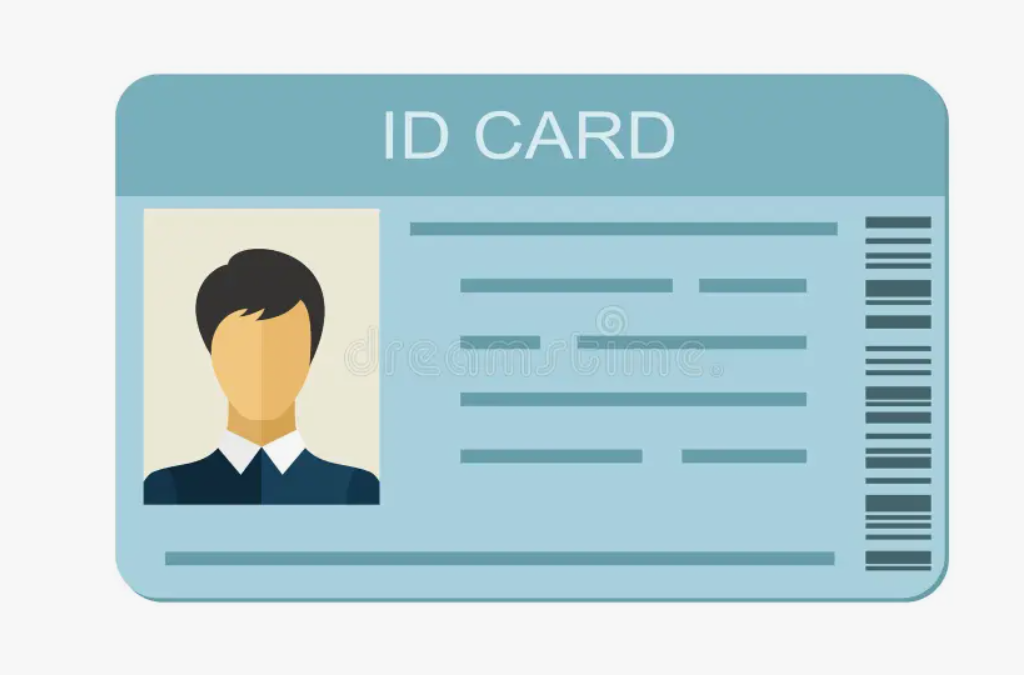
This article will guide you on how to generate a sample Social Security Number (SSN) in the United States. Understanding the format and rules for SSNs is essential for various administrative and legal purposes. Let’s dive into the details!
The Social Security Number in the United States follows a specific format consisting of three parts: the area number, group number, and serial number. Each part plays a crucial role in uniquely identifying individuals.
To generate a valid SSN, you need to follow certain rules. These rules include the range of possible numbers for each part and restrictions on specific combinations. Let’s explore each part in more detail.
The area number in an SSN corresponds to the location where the number was issued. It ranges from 001 to 899, with specific ranges assigned to each state. This helps identify the issuing location of an SSN.
The area number ranges for each state are assigned based on historical data and population distribution. This ensures uniqueness and accuracy in SSN assignment, preventing duplication and confusion.
Different states in the United States have specific area number ranges assigned to them. These state-specific ranges further assist in identifying the issuing location of an SSN.
The group number in an SSN is a specific range of numbers assigned within each area number. It further distinguishes individuals within a particular location, adding another layer of uniqueness to the SSN.
The serial number is the last four digits of an SSN and is randomly generated. It provides a unique identifier for each individual within a specific area and group number combination.
By understanding the format and rules for generating a SSN Number sample in the United States, you can ensure the integrity and accuracy of identification systems. Remember, SSNs are crucial for various administrative and legal purposes, so it’s important to generate them correctly.
Format of USA SSN
The Social Security Number (SSN) in the United States is structured in a specific format, which is divided into three parts: the area number, the group number, and the serial number. Each part serves a unique purpose in identifying individuals and ensuring the uniqueness of the SSN.
The first part of the SSN is the area number, which corresponds to the location where the number was issued. The area number ranges from 001 to 899 and is assigned to specific states. This helps identify the issuing location of an SSN and provides valuable information about an individual’s background.
The second part of the SSN is the group number, which is a specific range of numbers assigned within each area number. This further distinguishes individuals within a particular location. The group number helps narrow down the identification process and ensures that each SSN is unique within its respective area.
The last part of the SSN is the serial number, which is the last four digits of the SSN. It is randomly generated and provides a unique identifier for each individual within a specific area and group number combination. The serial number adds an additional layer of uniqueness to the SSN and helps differentiate individuals even further.
Overall, the format of the USA SSN consists of the area number, group number, and serial number. This format ensures that each SSN is distinct and provides valuable information about an individual’s location and background.
Rules for Generating SSN
When it comes to generating a valid Social Security Number (SSN) in the United States, there are specific rules that must be followed. These rules ensure that the generated SSN is valid and adheres to the format set by the Social Security Administration (SSA).
The first rule to consider is the range of possible numbers for each part of the SSN. The area number, which corresponds to the location where the number was issued, ranges from 001 to 899. Each state has specific area number ranges assigned to it, ensuring that the SSN can be traced back to its issuing location.
Next, we have the group number, which is a specific range of numbers assigned within each area number. This further distinguishes individuals within a particular location. The group number can range from 01 to 99.
The last part of the SSN is the serial number, which is the last four digits. This number is randomly generated and provides a unique identifier for each individual within a specific area and group number combination.
It’s important to note that there are restrictions on certain combinations of SSN parts. These restrictions help prevent the creation of invalid or duplicate SSNs. The rules for generating an SSN ensure that each number is unique and follows the specific format set by the SSA.
In summary, generating a valid SSN requires following the rules set by the SSA. These rules include the range of possible numbers for each part of the SSN and restrictions on certain combinations. By adhering to these rules, individuals can ensure that the generated SSN is valid and can be used for various purposes.
Area Number
The area number in a Social Security Number (SSN) plays a significant role in identifying the location where the number was issued. This three-digit number ranges from 001 to 899 and is assigned specific ranges for each state in the United States.
To ensure uniqueness and accuracy in SSN assignment, specific area number ranges are assigned to different states. These ranges are based on historical data and population distribution. By assigning specific ranges to each state, it becomes easier to identify the issuing location of an SSN.
For example, let’s consider the state of California. The area number range assigned to California is 545-573. This means that any SSN issued in California will have an area number within this range, such as 548 or 567.
Similarly, each state in the United States has its own specific area number range assigned to it. This system ensures that SSNs can be easily traced back to their issuing location, providing important information for administrative and identification purposes.
Range for Area Number

The area number in a USA SSN Number is a crucial component that corresponds to the location where the number was issued. To ensure uniqueness and accuracy in SSN assignment, the area number ranges for each state in the United States are assigned based on historical data and population distribution.
This allocation of area number ranges helps in identifying the issuing location of an SSN and plays a significant role in maintaining the integrity of the SSN system. By assigning specific ranges to each state, the Social Security Administration ensures that every SSN issued is unique and accurately represents the issuing location.
For example, the area number range for California might be different from that of New York, as each state has its own specific range. This system allows for efficient tracking and identification of individuals based on their SSN and helps streamline administrative processes.
To illustrate the significance of area number ranges, consider the following hypothetical scenario:
| State | Area Number Range |
|---|---|
| California | 001-199 |
| New York | 200-399 |
| Texas | 400-599 |
In this example, individuals residing in California would have an area number starting with 001, while those in New York would have an area number starting with 200. This clear distinction helps in accurately identifying and categorizing individuals based on their geographic location.
Overall, the range assigned to the area number in an SSN ensures the uniqueness and accuracy of the identification system, facilitating various administrative and governmental processes.
State-specific Area Numbers
Different states in the United States have specific area number ranges assigned to them, which play a crucial role in identifying the issuing location of a Social Security Number (SSN). These area number ranges ensure that each SSN is unique and can be traced back to the state where it was issued.
Each state in the United States is assigned a specific range of area numbers for SSNs based on historical data and population distribution. This allocation of area numbers helps maintain the uniqueness and accuracy of SSN assignment. For example, California may have a different range of area numbers compared to Texas, allowing for easy identification of the issuing state.
To illustrate this further, let’s take a look at a table that shows the state-specific area number ranges for some selected states:
| State | Area Number Range |
|---|---|
| California | 001-199 |
| Texas | 500-649 |
| New York | 650-699 |
| Florida | 700-799 |
As you can see from the table, each state has its own range of area numbers, ensuring that SSNs issued within that state can be easily identified based on the area number. This helps in various administrative and identification processes where the location of issuance is required.
Understanding the state-specific area numbers is essential when working with SSNs, as it provides valuable information about the issuing location and adds an extra layer of identification and verification in various legal and administrative procedures.
Group Number
The group number in a Social Security Number (SSN) plays a crucial role in further distinguishing individuals within a particular location. It is a specific range of numbers assigned within each area number. This means that even if two individuals have the same area number, their group numbers will be different, making their SSNs unique.
The group number is randomly assigned and does not provide any specific information about the individual or their background. It is simply a way to ensure that each SSN within a given area number is distinct. The purpose of the group number is to enhance the accuracy and efficiency of the SSN system, making it easier to identify and track individuals based on their location.
To understand how the group number works, let’s consider an example. Suppose the area number for a specific state is 123, and the range for the group number within this area number is from 001 to 999. This means that there can be up to 999 unique group numbers within the area number 123. Each individual within this state will be assigned a different group number, ensuring that their SSNs are unique.
It is important to note that the group number, along with the area number, does not provide any personal information about the individual, such as their age, gender, or ethnicity. It is simply a part of the SSN format that helps in identifying and distinguishing individuals within a particular location.
In summary, the group number in an SSN is a specific range of numbers assigned within each area number. It serves the purpose of further distinguishing individuals within a particular location, ensuring that each SSN is unique. The group number, along with the area number and serial number, forms the complete SSN, which is an essential identification number in the United States.
Serial Number

The serial number is a crucial component of a Social Security Number (SSN) in the United States. It serves as a unique identifier for each individual within a specific area and group number combination. The serial number consists of the last four digits of an SSN and is randomly generated.
This random generation of the serial number enhances the security and integrity of the SSN system. By using a random sequence of numbers, it becomes extremely difficult for anyone to predict or guess someone else’s SSN based on their area and group numbers.
The purpose of the serial number is to ensure that each individual within a particular location and group is distinguishable from one another. It adds an additional layer of uniqueness to the SSN, making it easier to identify and track individuals for various administrative and legal purposes.
It is important to note that the serial number itself does not hold any specific information or meaning. It is simply a randomly generated set of four digits that provides a unique identifier within the larger SSN structure.
To illustrate, let’s consider an example SSN: 123-45-6789. In this case, the serial number is “6789.” This four-digit combination is randomly generated and is unique to the individual associated with this SSN within their respective area and group numbers.
Overall, the serial number plays a crucial role in the identification and tracking of individuals within the United States’ SSN system. Its random generation ensures uniqueness and adds an additional layer of security to protect individuals’ identities and personal information.
